An Entrepreneur’s Guide to Despair, Discomfort, and Volatility (And Why You Need Them)
Box Cutter Co. Free Issue No. 77
Building something—anything—online or in the real world is rarely as tidy as people like to believe.
And definitely more complex than many on social media, Substack and Medium often portray.
You’ll hear stories of linear success: one clear idea, a perfect plan, step 1 to step 2 to step 3— The “Just be consistent” and BOOM 💥 👉 Success!
It’s comforting (for some) to think progress looks like that and plays out that way. But the reality?
The journey loops, kicks, jumps, bounces, squiggles, and kinks.
Through emotions.
Through action and inertia.
Through isolation and connection.
It’s not neat, and it’s not linear.
Preparing (and Adjusting) Mindsets is Critical
If you’re building something—whether it’s a business, a creative project, or a body of work—you’ll most likely loop through optimism, despair, discomfort, and fleeting moments of comfort and contentment.
That’s not a flaw — That’s the process.
Still, misconceptions persist no matter how much is written and posted about this.
There are so many traps, many pulling you to stop moving when things get complicated, hard, and demanding.
The pull to norms and the status quo will be overwhelming.
“This is stupid!” you will say to yourself. (And others will, too)
“What a ridiculous waste of time!” you will shout internally to no one in particular.
“So f*cking what?! Nobody cares! ” your inner asshole will scream while tantrumming on your imaginary floor.
But… that voice—the one yelling “nobody cares!”—it’s not proof you’re failing. It’s proof you’re in the ‘work’ — amid the murky mucky-muck.
Every entrepreneur, every creator, every builder hits these various points.
The frustration, doubt, and inner mental floor tantrums are all symptoms of the many loops and spirals we’ll go through.
Just as we also go through moments of excitement, exaltation, joy, celebration, and so on.
Preparing and adjusting mindsets to navigate this is critical.
Two Years of Box Cutter Co.
I’ve been through and live the mental tensions like those above.
This month — December — marks two years (24 months) of publishing Box Cutter Co.
This includes almost 170 issues and articles (including The Soulpreneur Series).
This month, this publication snuck past 800 subscribers. It’s been as high as 6 paying subscribers.
Some will say,
“Wow, 2 years and ONLY 800 subscribers… gee, is it worth it?”
And others may say:
“Wow, 800 subscribers and even six paying! That’s awesome!!”
I tend to shrug and say, it is what it is.
But… I also waver between both those statements above, too. And, let me be clear: this part of my entrepreneurial venture (e.g. publishing Box Cutter Co.) is not paying any bills. ;)
But, that is not currently the point of it. (Not yet, anyway)
Intention is Key
Anyone who has read past issues or articles knows about my decision to leave a steady, well-paying corporate public sector career in early 2022. One that I had built for over a decade (while our 3 kids were little).
Since 2022, I’ve managed to build a thriving set of entrepreneurial Soulpreneur, ventures — that now bring in more income than what I left behind.
These are based on being the CEO of my own time and energy and purpose-fully designing and pursuing the types of work and creative endeavours I want to be engaged with.
I love to write, think, critically engage, research, design educational materials, and be engaged in real, honest dialogue — and very little bullshit.
Yet! — to design this into income-producing ventures and initiatives takes many shifts in mindsets from the ones required to be an employee. To navigate status quo and satisfy others’ expectations.
Here are 4 “loops” of opposites I find can be pretty helpful.
The 4 Loops of Entrepreneurial (and Creator) Survival
Layer One: The Emotional Loop
Optimism ↔ Despair
At its simplest, the entrepreneurial journey starts with emotion.
You don’t build something new without belief—without the optimism that says, “This can work. I can do this.”
Optimism pulls you into motion. And inherent in emotion is also “motion”…
Optimism is the energy sparking ideas and initiative. The moment you see a possibility and think, Why not?!
But optimism is not a permanent condition — no matter the Bullshit memes and social media posts plastered all over the place.
Eventually, despair arrives. Reality hits.
The audience doesn’t show. The launch falls flat. The brilliant idea you believed in feels fragile, even foolish. Despair is the opposite tension from optimism. A low point.
It tempts you to stop, to shrink back to safety, “get a job!”
Yet… optimism and despair are two sides of the same work. They’re part of the loop.
Emotional highs and lows aren’t a sign of failure, nor of instability—they’re evidence that you’re moving, creating, testing, and trying.
Some Misconceptions to Cut Through
1. “It’s a Linear Path to Success”
Progress doesn’t move in a straight line. It loops, kinks, jumps, falls, trips, runs, and so on. Success isn’t about avoiding despair—it’s about moving with it and through it.
In the word “despair” lives hope. In Latin, sperare means "to hope."
To de-sperare is de- “without” plus hope (sperare).
2. “Failure Is Final”
A failed post, launch, or project doesn’t mean the end. Failure sharpens the next version. It’s a checkpoint, not an endpoint.
The roots of ‘fail’ simply mean to stumble, trip. And what do we do after we stumble? Regain balance and carry on.
Truth: You learn by tripping and stumbling. Feeling despair? Oh well… Keep going.
Layer Two: Action and Inertia
Comfort ↔ Discomfort
Optimism and despair feed your choices and actions. You’re either moving forward—or you’re not.
Comfort feels good. You hit a milestone: revenue, systems, and audience growth. The work gets easier. The pressure fades. Comfort can become stability.
But comfort, left unchecked, becomes stagnation. You stop moving. You stop risking. Systems you built to progress now keep you in place.
Discomfort, on the other hand, keeps you growing. It’s messy, uncertain, and rarely easy. But it’s where breakthroughs happen:
Posting something you’re unsure of (which in the beginning is almost everything)
Launching before you’re ready.
Sharing an idea no one else has tried.
Pushing against the crowd, calling “Bullshit”, questioning the status-quo.
Discomfort feels like risk. Comfort feels like safety. But safety is often an illusion — especially when it stops you from building or trying what comes next.
Some Misconceptions to Cut Through
1. “Comfort Means You’ve Made It”
Comfort is temporary. It’s a place to rest, catch your breath, not a place to stop.
Entrepreneurial Reality: Growth lives in discomfort—it’s where you can determine what actually matters. Risk doesn’t guarantee reward, but avoidance guarantees nothing changes.
2. “If You Build It, They Will Come”
Great ideas simply don’t attract attention by themselves. Systems, platforms, and audiences don’t “just happen.” Visibility is built—one post, one interaction, one step at a time.
Reality: Building it and posting it is the starting line, not the finish. Consistency alone won’t cut it (no matter how much you read this online)—showing up without substance is just more noise.
Persistency is what matters. The grit to keep going, improving, keep adapting and garnering attention in a crowded, noisy, indifferent world.
Layer Three: Isolation and Connection
Isolation ↔ Community
Building something new as an entrepreneur — as a Sole Proprietor / A Soul Proprietor — often means being alone.
The places where you step outside default settings and choose not to follow someone else’s blueprint. You will feel the quiet of isolation.
The crowd thins. The room clears. Isolation is where fresh ideas take shape, uncorrupted by noise and distraction. It sharpens thinking, supports reflection, and reveals what matters most.
I love isolation—not as a permanent condition but as a critical part of who I am. In my 20s, for example, I spent three summers riding a bicycle on my own from Inuvik, Northwest Territories (in the western Arctic) to Los Angeles, CA.
It was a wonderful — and challenging — set of experiences.
But isolation has its limits. Without community, the work can stall. Ideas can lose their way. Community balances the isolation.
It’s where some momentum returns—maybe testing ideas, sharing weight, and gaining support.
The loop requires both. Isolation gives you focus. Community gives you energy and support. Shift fluidly between them and keep the work moving.
Some Misconceptions to Cut Through
1. “Isolation Is a Sign of Failure”
Being alone doesn’t mean you’re failing. It means you’re thinking differently. But too much isolation can leave you stuck.
Reality: Fresh ideas arrive and take shape in solitude. Momentum builds in community.
2. “More Is Better: Followers, Content, Platforms”
Growth isn’t necessarily about chasing volume. More followers, more posts, and more platforms won’t save shallow work and won’t save feelings of isolation.
Reality: A small, engaged audience can build you up. A large, indifferent one will burn you out.
Depth wins over reach in the long run. Viral is exciting (briefly) — valuable is enduring.
3. “If You’re Not Growing Fast, You’re Falling Behind”
Hustle culture rewards speed. But fast growth often sacrifices alignment and sustainability. Slow growth, done well, outlasts trends.
Truth: Big impact comes from intentional steps.
Layer Four: Stability and Volatility (Green)
Stability ↔ Volatility
At the outermost layer of the loop lies tensions many rarely talk about but feel every day — the pull between stability and volatility.
Stability is where things work. The systems hold. The income steadies. Stability is comforting—predictable, secure, and earned. It’s what many work hard to reach.
Volatility disrupts that comfort. It’s unpredictable, chaotic, and full of risk. But volatility is also where growth and reinvention live. It’s the energy shaking things up, breaking systems no longer serving you, and pushing you into new paths.
The paradox?
Stability doesn’t last without volatility.
Too much stability, and the work stalls. Systems become rigid. You stop asking questions. You hold onto what worked for too long. The same comfort that once felt earned now traps you.
Volatility feels like chaos, but it’s movement—necessary movement. It shakes you out of complacency and forces you to adapt, create, and rebuild. Volatility disrupts comfort, but it also stops stability from becoming stagnating.
The Looping Tensioned Entrepreneur
The word entrepreneur comes from French entreprendre, meaning “to undertake.” Its roots go deeper still, tied to Latin inter (“between”) and prehendere (“to seize or grasp”).
To be an entrepreneur is to be someone who acts, who moves in the unknown, who steps into in-between states to potentially grasp something not yet realized.
The loops don’t disappear when you “succeed” (whatever that means). If anything, they intensify.
You’ll face despair after a failed launch and optimism as the next idea sparks.
You’ll find moments of stability, only to be jolted by volatility pushing you forward.
You’ll seek isolation to clear the noise, only to realize community is where momentum builds.
These tensions and yo-yo’ing aren’t something to overcome. It’s something to live within and leverage.
Entrepreneurial reality: You don’t escape the loops. You learn to use them.
I use learning journals to navigate these tensions. I have some that are pen and paper and some that are digital.
In many ways, Box Cutter Co. is a public Learning Journal. I share openly what I’m learning and noticing along the way. I also revisit my own posts, reflect on them, and sometimes rework them.
I have built a Free 5-day Email Course (no spam, no catch) exploring some mindset components involved in the Solopreneur journey. Some readers here have taken this course.
How about you?
Where are you in the loops right now?
Wherever you are, remember: pathways of progress aren’t neat and tidy. You will trip and stumble (e.g. fail). It’s required, actually.
But the loops are there to keep the tension on, to shape you, and to keep you moving.
What tension are you navigating today, and how will you step into it?


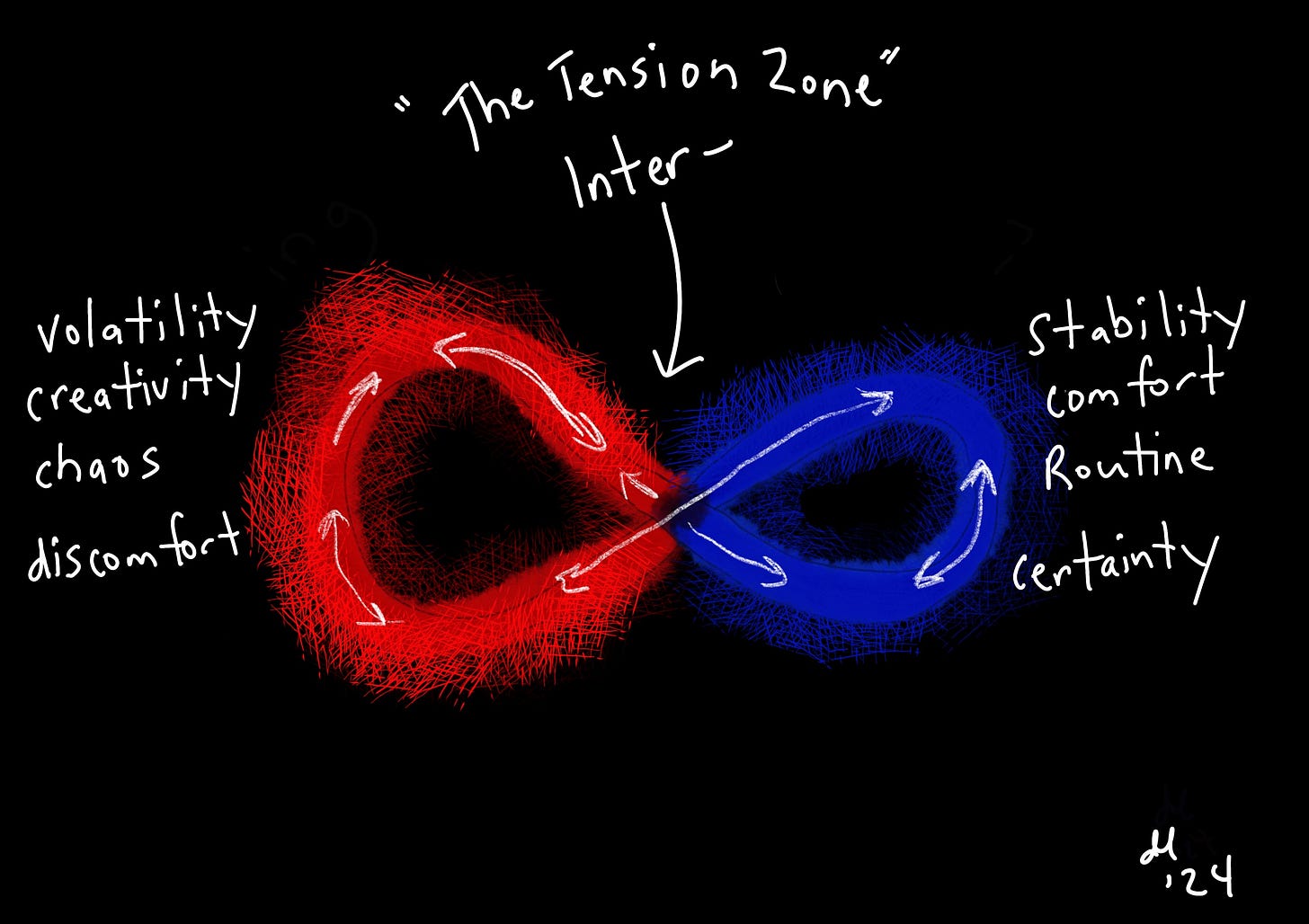
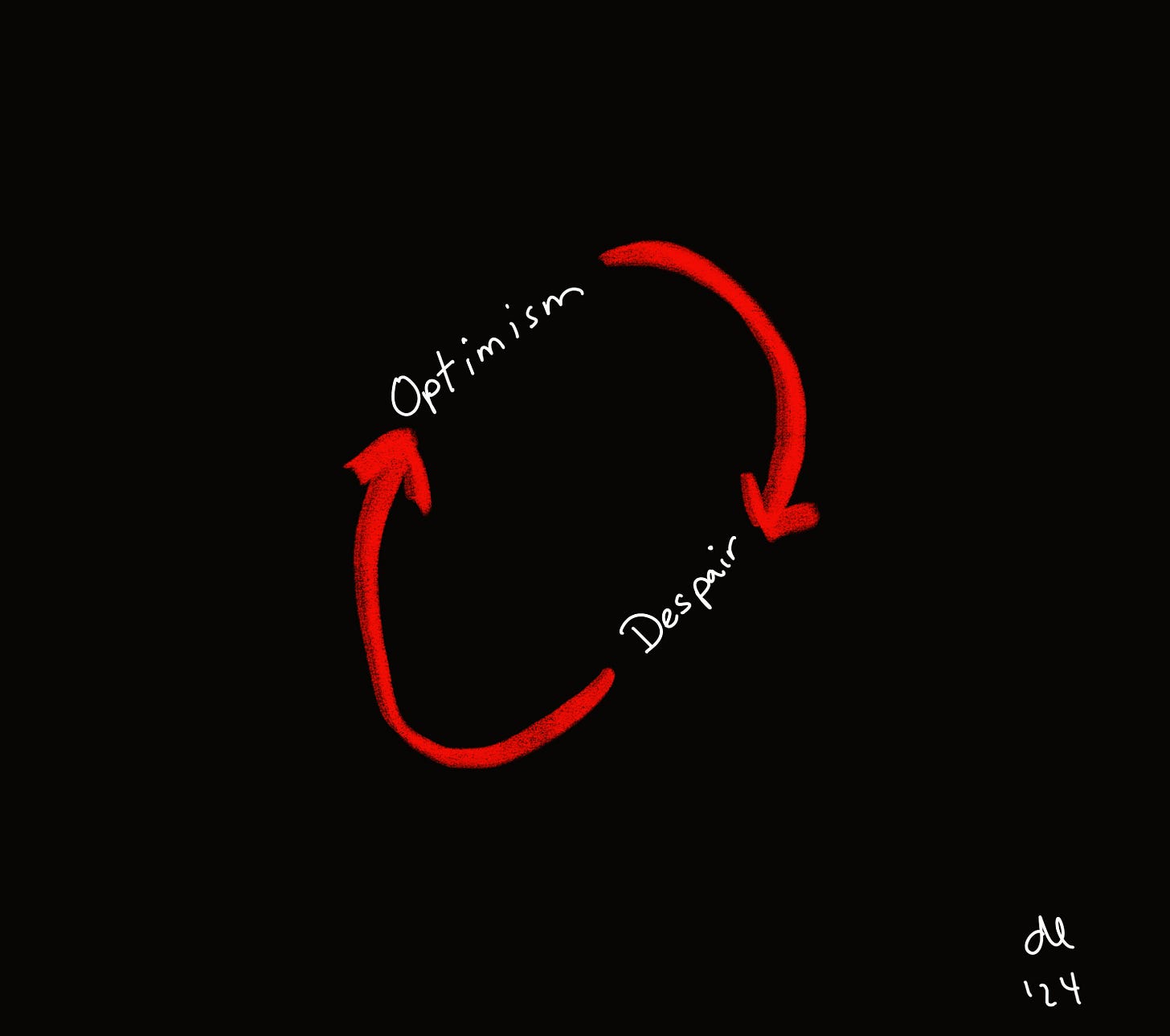
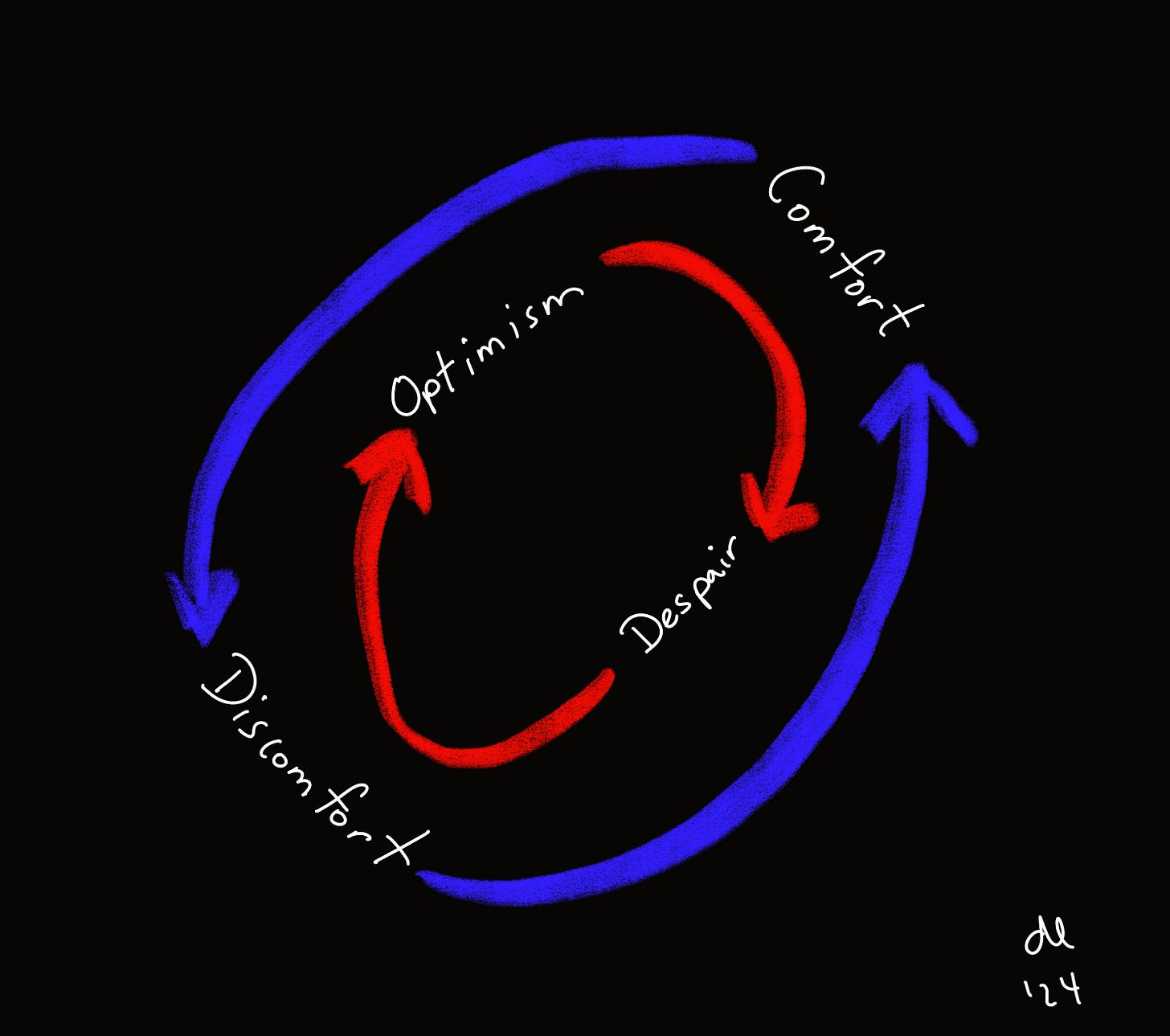
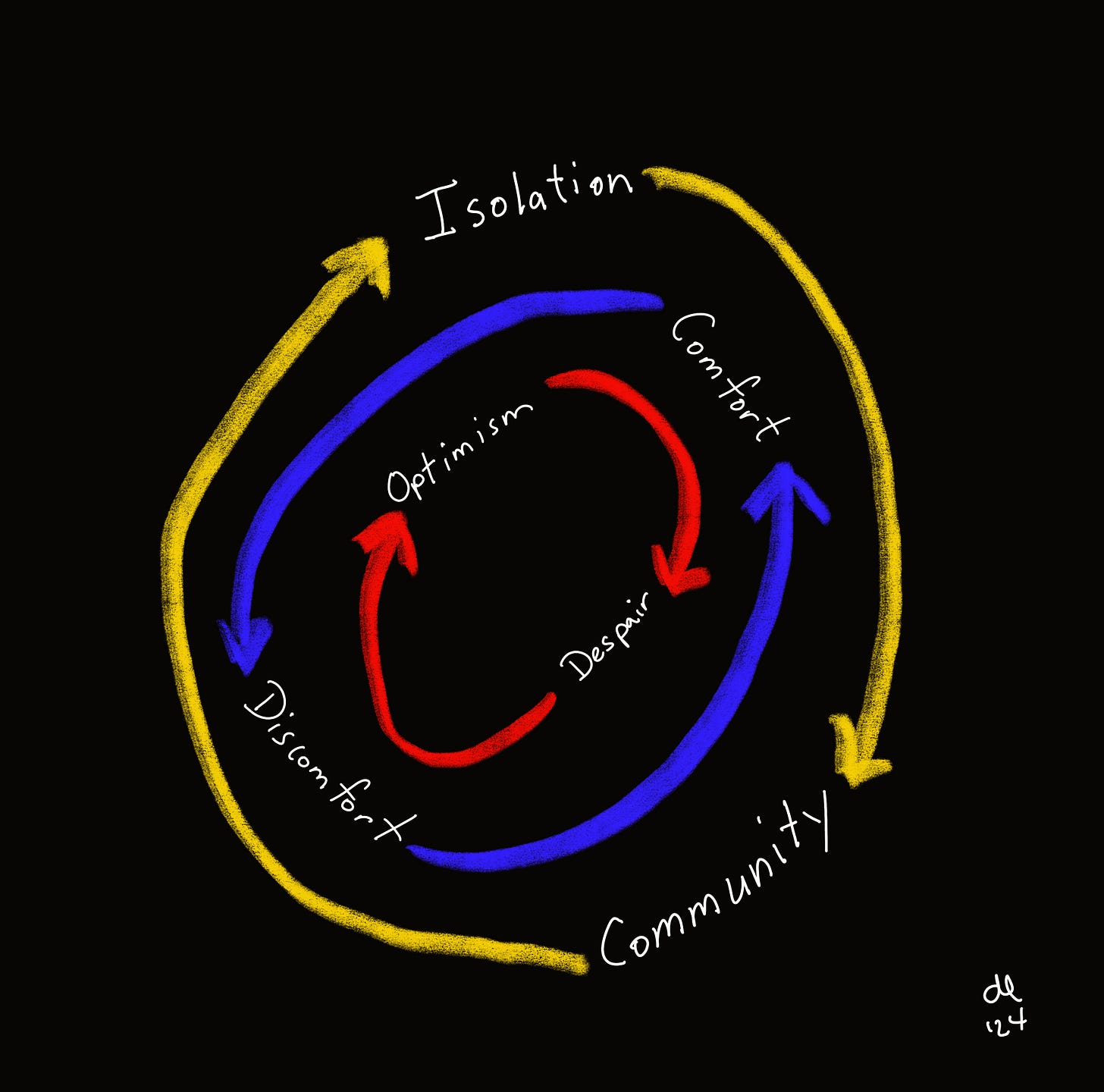

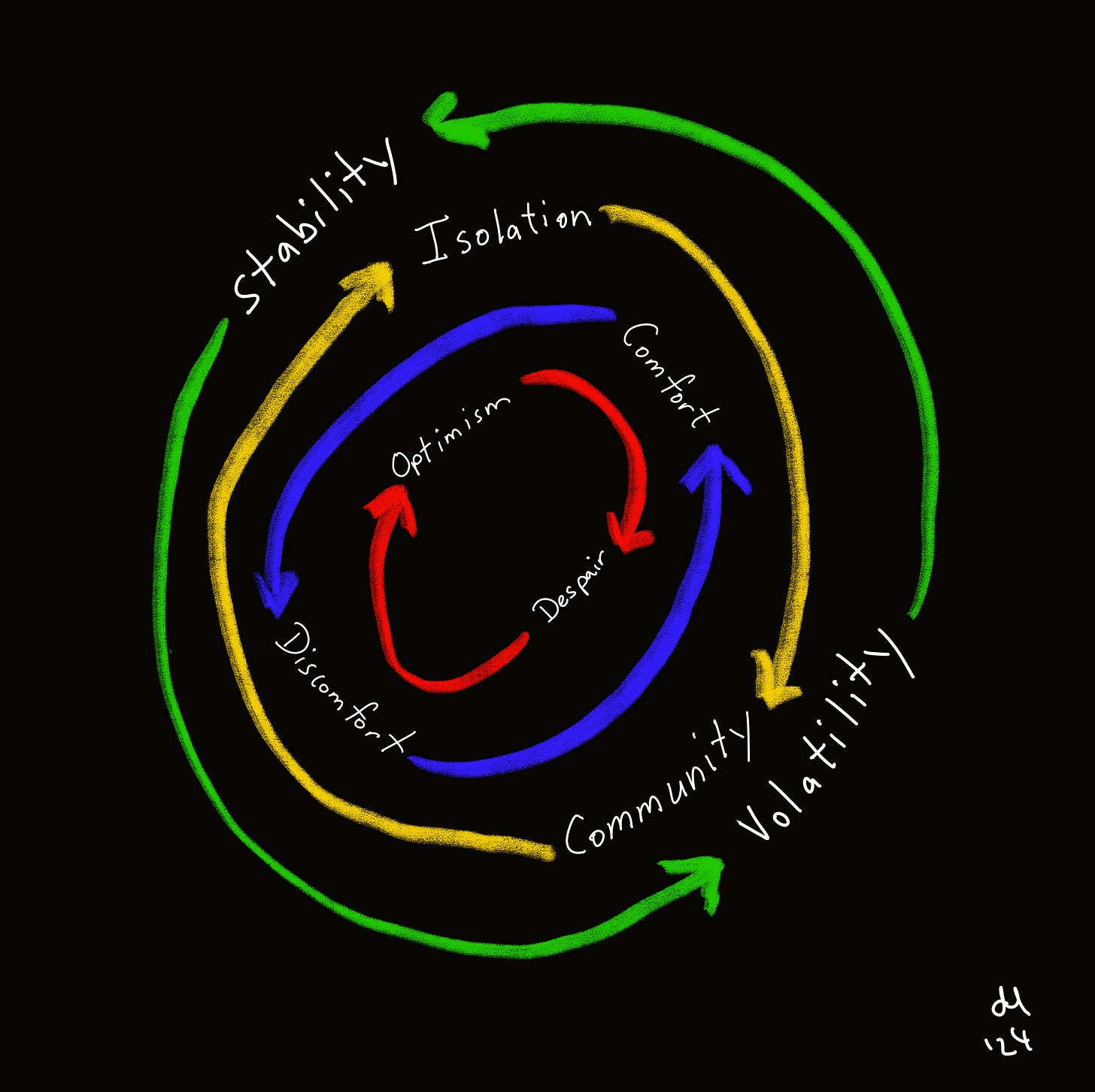
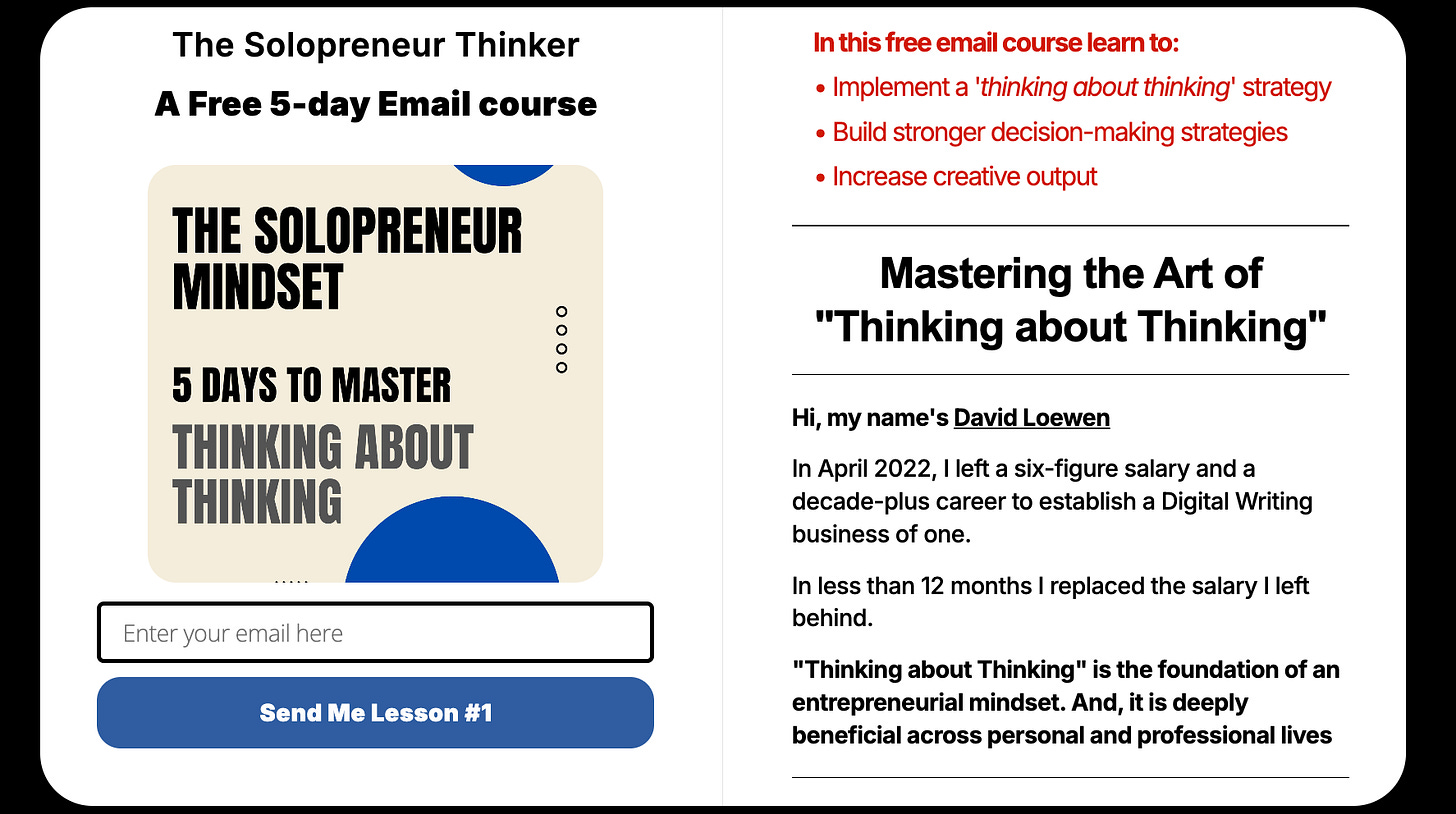
It’s good to know that these are normal cycles and emotions to help us grow - and if identified as part of the whole, we can use them to thrive. Thank you, David, for sharing this valuable understanding of how the process works. I feel better now - more confident, hopeful and prepared knowing this cycle is necessary and beneficial.
In addition to the Solopreneur Thinker 5-day course. We also have the Free 5-day "Learning Journal Crash Course".
https://www.learningjournal.life/